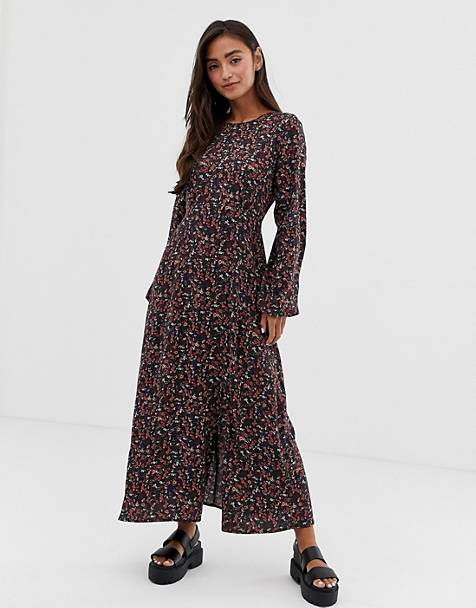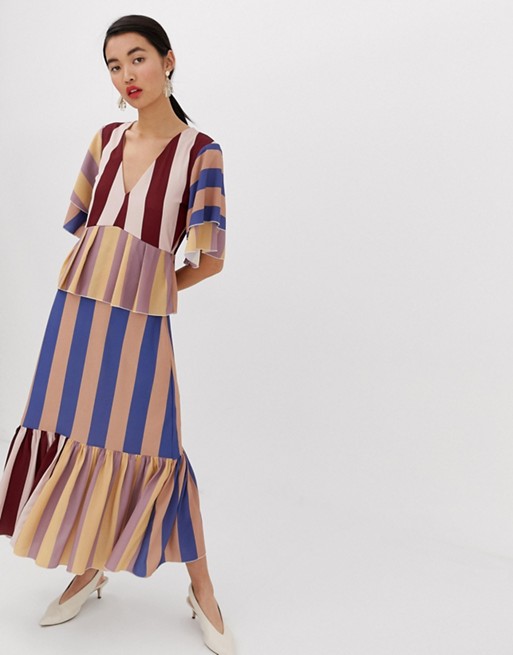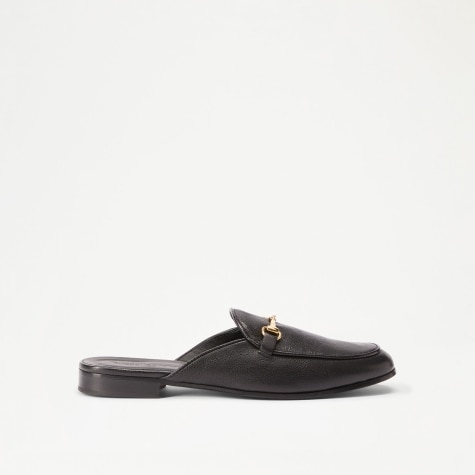Decoding Beauty
This blog post has been written as part of a paid partnership with Allergan who hosted the Juvéderm and Tatler Beauty Decoded event.
So this is a topic that - even at 46 - it appears taboo to mention. Aesthetic Procedures. Last week, I was invited to the Beauty Decoded Live event with Juvéderm and Tatler.
It's a subject which I (as I've never really paid any attention to what you are "supposed or not supposed" to do) have talked about many times and it's always met with a variety of responses.
Many are pleased that it's something we are having more open conversations about. The more information we have, the more informed we can be in the decisions we make, which is something I will come back to.
But some are more negative in their reaction. They raise the queries as to why you would bother, why are you not happy ageing in the way nature intended you to and there's always the interesting debate as to the message it sends our teenagers and the effect it may have on their mental health.
So firstly - I think this is a subject on which everyone will need to agree to disagree. There really are no wrong or right answers and there are those, for sure, who will always think it's an abhorrent thing to do.
Personally though, I have absolutely no problems with putting my head above the parapet and say it's something in which I am hugely interested and invested.
For me - it's not about looking younger. I know it now sounds like a cliché but it's about being the best version of myself. It's about looking fresher, less tired, less saggy, less broken...I know that sounds dramatic and I've really thought about whether or not to say it but there are times, when the going has got really tough and I've made it through - yet I've looked in the mirror and I can't see that success on my face. The stress has taken such a toll that I look - frankly broken. And I'm NOT. I want my face to reflect the positivity that I work so hard in my everyday life to create. And when it all goes a bit wrong (as it often does as - hell - it's real life), I want to be able to fake it a little. I'm not sure everyone will agree with that but it's an honest, open opinion and I want to be able to start this conversation and not shy away from how we really feel.
I also think, as a society, we have a disconnect between how we are and aren't "allowed" to age. It has been mentioned to be me about the potential negative message we're sending our teens when it comes to just being yourself and not adapting to fit a stereotype of looking younger... we should embrace our wrinkles, our jowls, our saggy skin... It's vain to think otherwise.
But there doesn't ever seem to be the same conversation about embracing grey hair... or living with flaky, dry nails (there are more nail bars where I live than there are restaurants!), or wearing make up? Or even just looking after your skin with creams and serums. Why is there a line drawn between some things that improve on what we were born with and others? Surely, it's about looking in a mirror and being happy with what we see? Yes, I can imagine that in an ideal world, everyone would walk around and not care what others think of them (shouldn't we all be able to walk around naked in that case?) but realistically, that's not how society works. It's now how it's worked for hundreds of years.
I do feel I should mention - before someone else does - the pressure that society puts on us to look a certain way. Without a doubt, it is a tricky conversation to have and, as I've said, there are no wrong or right answers.
I would like to empower my teenage daughter with the confidence to do what SHE wants to do. I prefer to look on it as a positive message. It's not about fitting a social stereotype, it's not about conforming, it's about doing what works for you. You don't have to settle - you can make changes. And for the majority of us - I don't think it's too far a stretch to say, that if you know you look good, you feel good. It can have a positive effect on our mental health.
AND it's an individual choice. You can choose whether or not this is something you want to do but by having these conversations and by understanding more about the procedures - we're empowered to make informed choices.
And continuing on this topic, I will say that whilst I have had injectables in the past, the thought of fillers has always terrified me. Surely everyone you see who has fillers looks mostly quite terrible? The hamster cheeks, the pillow face?
But as someone pointed out - the only people you notice it on are the people who have had it done badly. There are those out there who look amazing and you can't notice them at all. THAT is the true beauty of fillers.
So that made sort of sense but there were a whole host of other questions I had to ask before I made the decision to go down that route. And over on Instragram, last week when I was at the event, I asked for any questions that people had, that we could get answered.
Turns out, we are all singing from the same hymn sheet and all do have the same sort of questions... so here's what I've found out.
How do you find a good practitioner and what questions should you ask?
1) Ask about their training and experience. You should only be injected by a trained and qualified practitioner.
2) Ask to see examples of their work - before/after photos of patients who have helped to achieve a similar look to that you desire.
3) Ask your practitioner which brand and products they use and why.
4) Ask them to explain the treatment plan you'll need to get the look you want.
What's in filler?
Juvéderm is the world’s leading brand of dermal fillers (and has been for 8 years), The key ingredient in dermal fillers is hyaluronic acid (HA), which is a sugar the body produces naturally to help to maintain volume in the skin. HA is found in your connective tissues, including you skin. It serves as a moisturiser attracting and attaching water molecules to give skin its elasticity and tone. Juvéderm products blend with the tissue underneath the skin to give natural looking results. Juvéderm products also include lidocaine, which can help reduce discomfort during the procedure.
How do you know if you might be allergic?
At your initial consultation your practitioner will discuss whether or not you might be suitable for treatment. The full ingredient listing is detailed in the product packaging which your practitioner will go through with you. This is why the consultation remains the most important part of the whole treatment journey and why it’s so important to go to an appropriately trained healthcare professional. A trained healthcare professional will consult you on whether or not you are suitable for treatment and ensure you receive the appropriate treatment if you are.
Where does it go in the end? Does your body break it down?
Overtime, the body naturally breaks down and removes the HA.
What happens it if goes wrong? Is it reversible?
If you've had dermal fillers and are not happy with the results take up the matter with your practitioner through the clinic where you were treated. If there are any complications that require medical attention, it is best that you go back to the practitioner who treated you. If this is not possible, you can go to your GP or local accident and emergency department.
How long do they last? How much do they cost?
It depends on which product they use and what treatment plan you have, but it can be between 9-24 months. Cost will depend again on the treatment plan.
Are they painful and can you get bruises from them?
There will be a slight stinging or discomfort at the site of the injection, but this typically lasts no longer than 30 seconds.
Most of the products in the Juvéderm range contain the mild local anaesthetic, lidocaine (0.3%), so patients can enjoy the comfort of a gentler injection experience, compared to products with no anaesthetic ingredient.
You may experience swelling or redness after treatment. Most patients can return to their normal routine on the same day as their procedure depending on treatment received. However, your practitioner may advise you to avoid a few things for a while, such as wearing makeup on the treated areas, extended periods in the sun, saunas, UV rays or very cold temperatures.
There is an element of discomfort to be expected but that will depend on your personal pain threshold and the treatment that you have. And similar with bruising - some it to be expected but not everyone reacts the same.
I’ve heard that there are fake dermal filler products being used in some clinics. How do I know if I’m receiving the genuine article?
To ensure that you are receiving genuine Juvéderm product we would recommend that you visit the Juvéderm clinic locator to find a reputable practitioner. If in doubt, you can contact the Allergan helpdesk to confirm that your practitioner is an Allergan customer.
Do you have to keep having it done once you've started - what happens if you stop?
Dr Tapan Patel, Aesthetic Physician and Allergan Key Opinion Leader says: “It’s important to understand that with an experienced practitioner, we are aiming to treat the underlying cause of problems in the face. Accordingly, we are re-establishing the support that may have become weak. As long as the treatment is performed according to the needs of the patient it should allow an impactful but natural result. Remember, the face will continue to age, so with time, maintenance treatments may be required but this reflects the ageing process.”
The biggest surprise of the evening for me, was seeing what effects fillers can have. What treatment plans are available - I genuinely just assumed it was to make your lips bigger (as in give you a bad trout pout which never appealed - oh how wrong was I?) or falsely enhance your cheekbones...
WRONG. All the changes below have been done using fillers.
And this one - which Dr Mauricio de Maio did live on the evening (behind the screen...). What you can't see, is the lady's reaction. She was so happy - and said it wasn't painful at all (although I have heard that there is an element of discomfort which will vary from person to person as I said above). The results really are instantaneous.
I will admit that I was sceptical about going down this route before I attended the event. I assumed fillers were some sort of chemical nasty (I had NO idea they were hyaluronic acid) and I assumed that the results were all a variation of the inflated cheekbone/lip nightmares that I think the majority of us associate with fillers. I could not have been more wrong.
It's a procedure I am definitely going to consider, and I will make sure I ask all the questions, get all the recommendations and am 100% happy with the practitioner I use. Watch this space....










































